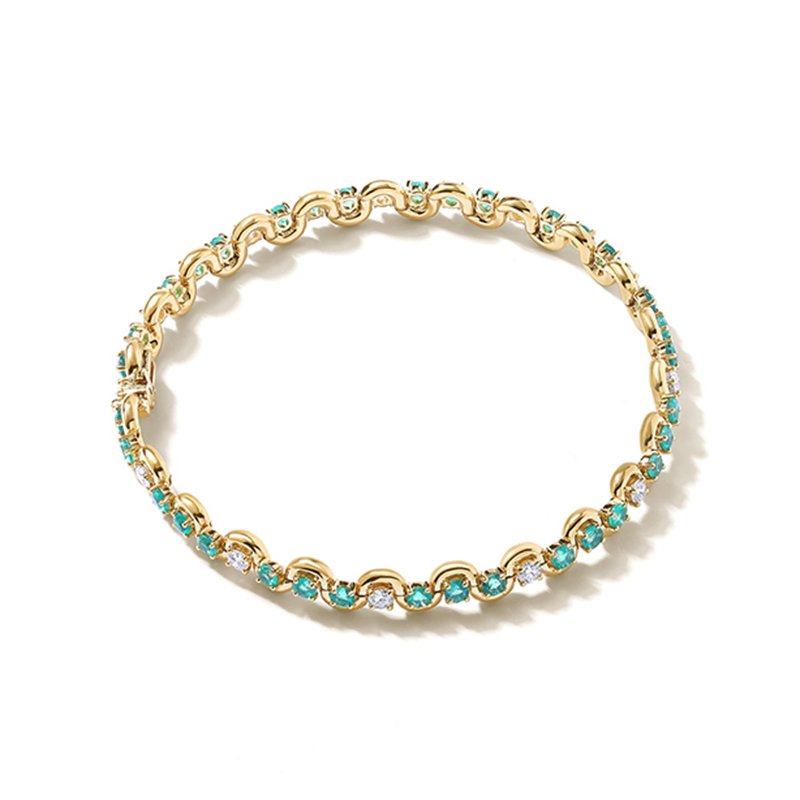It seemed like the world had paused to soak in the lavish celebrations that was the pre-wedding weekend of Anant Ambani and Radhika Merchant’s nuptials. Rihanna was there, and as a performer to boot! A who’s-who of the world’s richest and fanciest were there too. Mark Zuckerberg traded out his Brunello Cucinelli tees for an embroidered shirt to suit a jungle fever-themed night. Bill Gates showed up, as did supermodel-turned-entrepreneur Karlie Kloss; and naturally the crème de la crème of Bollywood celebrities, like Shah Rukh Khan, Janhvi Kapoor and Alia Bhatt among many others. But one lady showed everyone up in an unexpected way: family matriarch Nita Ambani made waves online thanks to her truly impressive emerald jewels.
The mother of the groom wore a custom Kanchipuram silk sari designed and crafted by the Indian couturier Manish Malhotra. But what really stood out was the gobsmacking jewellery that she wore: an emerald and diamond necklace, studded with pairs of emeralds and terminating in two veritable bricks of the gleaming green gemstones. This luxurious piece was immediately noticed online, with plenty of comments joking that the price—estimates have been bandied about but not confirmed—might match the GDP of a small nation. This coincided, funnily enough, with a spike in Google search queries for the meaning of GDP, or gross domestic product.
But the choice of emeralds—both Nita and her daughter Isha Ambani wore the gems—is a testament to the allure of this precious stone. Emeralds were first recorded being mined in Egypt from at least 330BC, and have been one of the most desirable gemstones in the world. The highly particular geological conditions that lead to their formation is a big part of why they’re so rare. Emeralds are a variety of the beryl mineral, and get their green colour specifically from chromium impurities. When colourless beryl crystals are exposed to other elements, they form different colours and gemstones: the blue of aquamarines from iron, and pink morganites from manganese.
The meeting of beryl and chromium in emeralds is, however, something of a natural miracle. Beryls tend to occur in upper, more recent layers of rock on the Earth, while chromium tends to occur in the far older and deeper mantle. One of the main ways that emeralds are formed is when superheated water, containing dissolved chromium, crashes up against the igneous crust. As these collisions cool, a metamorphic change happens in the beryl and emeralds take shape. Emeralds only occur in a select few places on Earth. There were the ancient Egyptian mines, but the main sources today are Colombia, Zambia and Brazil.
A lot of the prestige around precious gemstones stems from its rarity. Diamonds famously take incredibly high temperatures and pressures, squeezing carbon into gleaming rocks. It’s said that emeralds, with their even more specific conditions, are about 20 times rarer than diamonds. And unlike diamonds which have a whole grading system, gem-grade emeralds are almost always visibly included. It’s a fact of their chemical and mineral makeup—and something that’s been embraced throughout history as part of its beauty. The French dubbed these inclusions the jardin, or garden, and they’re taken as a part of each emerald’s unique quality.

These precious gemstones have figured into jewellery for millennia. Perhaps the most famous lover of the gem was Cleopatra, who was said to festoon and adorn herself in the green jewels. The stones have also been a major part of the Indian gem tradition. Ancient Indian culture associated emeralds with wisdom and power, and it was a favourite of many Mughal rulers. In the Western tradition, the green of emeralds was thought to have related to the mythology of Venus, the Roman goddess of love and beauty who was birthed from the sea.

This mythology endures even in contemporary creations. In Bulgari’s 2022 high jewellery collection ‘Eden, Garden of Wonders’ there are a host of emerald designs. But a standout is the Venus necklace, that takes inspiration from both myth and a Mediterranean plant nicknamed ‘Venus’s hair’. It features a branch and leaf design, dotted with 71.24 carats of diamonds, and studded with 62 emeralds beads that total 130.77 carats in weight. At its centre, an octagonal 19.30 carat Colombian emerald that grabs the eye.

And when Cartier unveiled the third chapter of its Le Voyage Recommencé high jewellery collection earlier this year, an emerald piece was part of its showstopper lineup of necklaces. Named Lerro, the design features symmetrical zigzagging lines of diamonds down the neck, culminating in three descending octagonal emeralds from Colombia. Understated geometry, enhanced with diamonds, that ultimately draws the eyes to the prized greens.

While large emeralds are rare and most often found in high jewellery, that’s not to say they’re entirely out of reach. The gemstone is still a strong favourite among jewellers today. One that’s close to home is the Singapore brand State Property. In its Byzantine-inspired Arcane collection, there is a line of undulating Edessa designs that evoke an old-world sensibility of geometry and architecture while being resolutely modern. Consider its of-the-moment twist on the classic Tennis bracelet in yellow gold set with a combination of emeralds and white diamonds.





